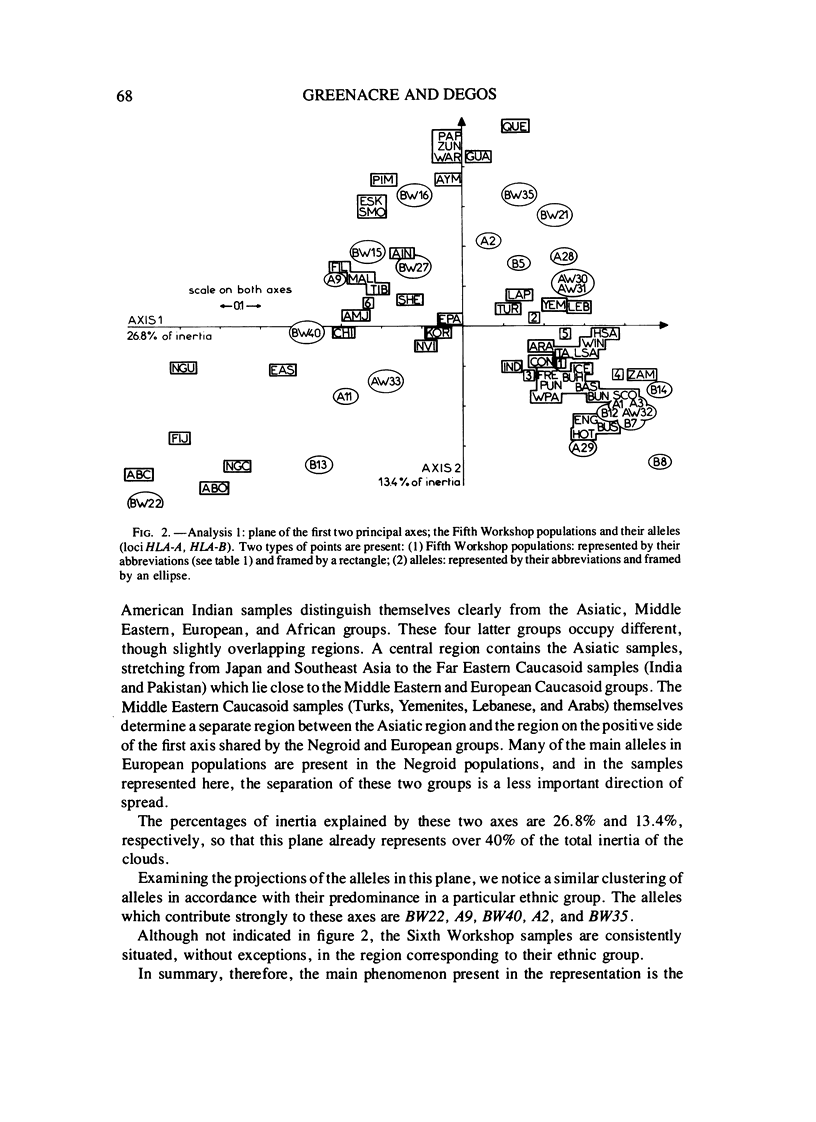Abstract
Correspondence analysis, a variant of principal components analysis, is used to interpret and compare gene frequencies of the HLA system for 124 samples from different populations studied in the Fifth and Sixth International Histocompatibility Workshops. The major advantage of this analysis is that populations and HLA genes are represented simultaneously with respect to the same axes in multidimensional space. This permits the visual interpretation of genetic differences between populations, the relative participation of each gene in the dispersion, and the correspondence between populations and genes. By this method a clear separation of ethnic groups in the world is obtained. Furthermore, within Europe the separation of samples from different countries is concordant with their geographical distances. The HLA system appears sufficiently polymorphic to define a population by its gene frequencies.
Full text
PDF















Selected References
These references are in PubMed. This may not be the complete list of references from this article.
- Edwards A. W. Distances between populations on the basis of gene frequencies. Biometrics. 1971 Dec;27(4):873–881. [PubMed] [Google Scholar]
- Munksgaard E. C., Bruun C. Determination of fluoride in superficial enamel biopsies from human teeth by means of gas chromatography. Arch Oral Biol. 1973 Jun;18(6):735–744. doi: 10.1016/0003-9969(73)90009-5. [DOI] [PubMed] [Google Scholar]
- Piazza A., Sgaramella-Zonta L., Gluckman P., Cavalli-Sforza L. L. The Fifth Histocompatibility Workshop gene frequency data: a phylogenetic analysis. Tissue Antigens. 1975 Jun;5(5):445–463. doi: 10.1111/j.1399-0039.1975.tb01489.x. [DOI] [PubMed] [Google Scholar]


